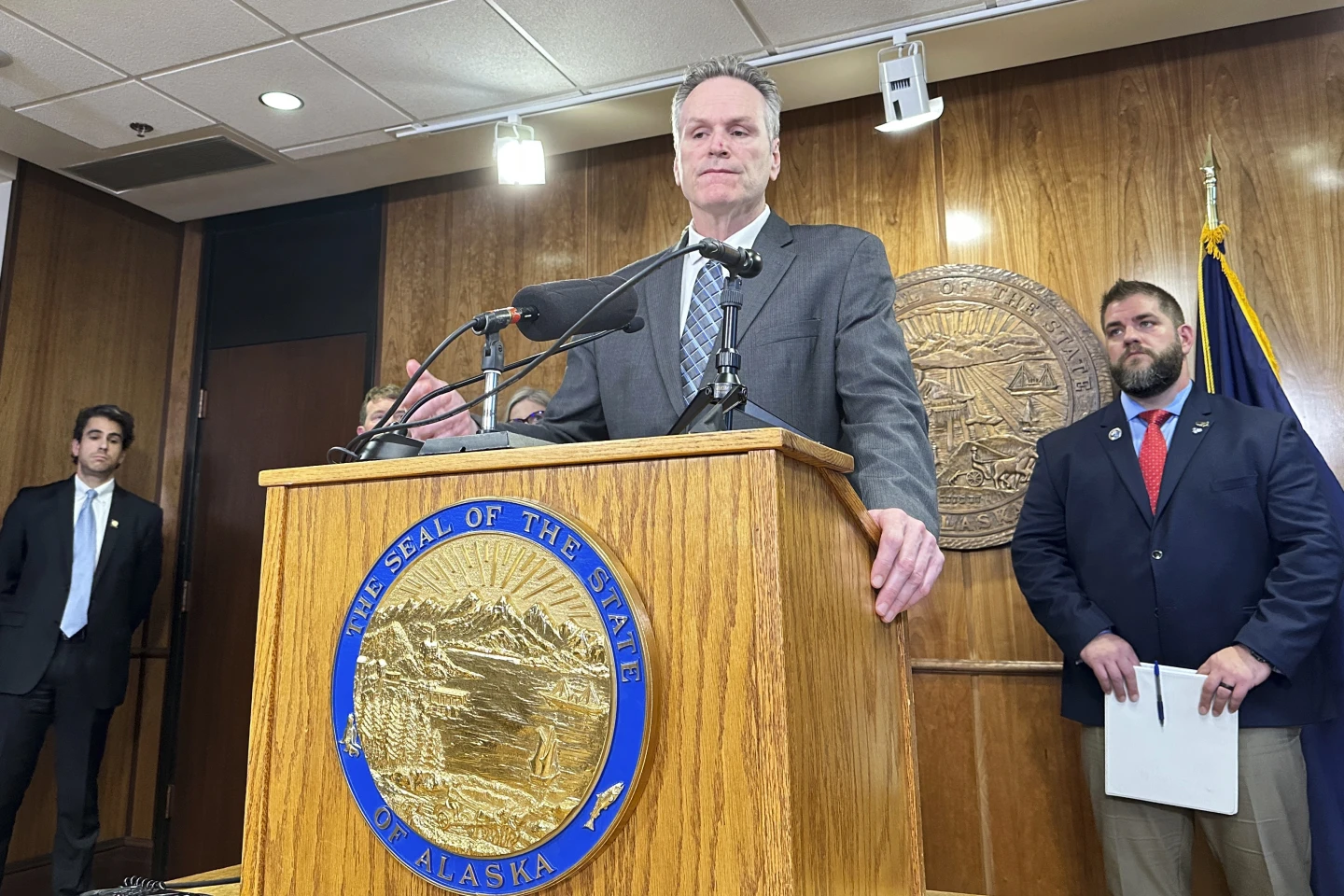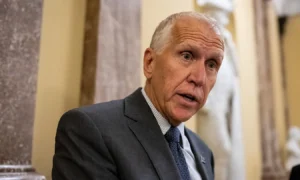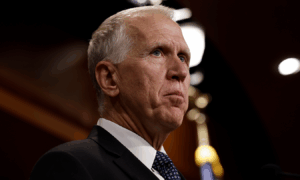“Happy days are here again,” said Republican Governor Mike Dunleavy of Alaska following President Trump’s inauguration. “Christmas every day” for a state whose fortunes rise or fall with oil, he said, comparing Trump’s supportive approach to energy development.
However, the approximately three months after Trump’s inauguration have been filled with chaos, causing significant disruption to Alaska’s federal personnel and casting doubt on the dependability of federal funds.
Legislators in Alaska already face a great deal of uncertainty due to the annual process of creating the state budget in light of the ever-changing price of oil; his on-again, off-again tariffs and the resulting decline in oil prices have further added to that. Midway through May, before Trump’s newly announced halt on additional tariffs for several nations expires, the legislative session is scheduled to come to a close.
A long-standing disagreement has been exacerbated by the whiplash, and that is the relative merits of allocating funds from the annual oil-wealth fund check that the majority of Alaskans get to various needs, including as education. Despite persistent budget deficits that have persisted for over a decade, lawmakers have shown little enthusiasm for increasing taxes and have frittered away billions of dollars in savings.
Speaker of the House Bryce Edgmon (an independent) led a coalition of Democrats, independents, and two Republicans, and he remarked, “We’re all in a pickle.”.
The oil boom and bust cycle is nothing new to Alaska. Government spending on infrastructure and other initiatives increases when prices are high and decreases or closes facilities when prices are low. Forecasts of oil output and prices serve as the basis for lawmakers’ spending plans, which are updated twice yearly.
About $90 per barrel was the price of North Slope oil a year ago. Starting last autumn, it hovered around $70 and dropped as low as $65 this week, just before Trump announced the 90-day tariff halt.
The independent Legislative Finance Division estimates that the state would get $35–$40 million for every dollar shift in oil prices at the present market pricing. For the next fiscal year, the March revenue projection assumed oil at $68/barrel, a $2 decrease from the December projection.
Dunleavy spokesman Jeff Turner told reporters that the governor is engrossed in Trump’s executive order that authorizes more drilling for oil and gas, mining, and logging in Alaska, and that it’s “great to have an administration that supports Alaska’s responsible resource development.” Turner added that oil prices are subject to frequent fluctuations and that OPEC+ members’ plans to add more oil to the market could lead to a price softening.
A number of state political figures are holding out hope that the enormous liquefied natural gas project in Alaska will attract investment or commitments to purchase gas from nations such as Japan, South Korea, and Taiwan in response to Trump’s planned tariffs. Cost worries, competition from other projects, and doubts over the project’s economic viability have all contributed to the project’s slow progress, despite Trump’s frequent promotion of it.
In November’s election, Trump won Alaska.
The nest-egg oil-wealth investment fund is another major source of revenue for Alaska, second only to oil. The fund’s capital is safe, but you can spend the money you make from it. A portion of the fund’s average market value over five years will be used by lawmakers to restrict withdrawals. Legislators also started utilizing earnings for state services in 2018, but there has been disagreement about how much should go toward each. Earnings have always funded the annual dividend distributed to residents.
Dunleavy recommended taking money out of the state’s shrinking reserves to pay for a payout of about $3,800 per citizen, which would cost $2.5 billion (or two-thirds of this year’s profits withdrawal). Legislators scrapped that amount years ago because it was too expensive.
Legislative leaders are hearing calls for more financing for K-12 schools, but they are unable to grant such a request due to the proposal’s anti-education bias and the effects of inflation, rising energy prices, and health care expenses. Those who are concerned about children’ safety in the classroom have called on the state to address a maintenance backlog that has led to mold and structural problems at some schools, among other problems.
The total dividend and energy relief payout last year was $1,702. Another combined dividend and energy relief check, with a low of $992 in 2020 and a high of $3,284 in the previous five years.
Republican House Majority Leader Chuck Kopp stated that lawmakers need not to be “even stoking the fantasy” of a dividend of Dunleavy’s magnitude.
This payout “distorts the fiscal reality that we’re facing,” he added, and we cannot pay it. “Shall we focus on increasing our current income or determining the appropriate level of dividend payments and how to allocate our resources accordingly?”
There has been scant support for adjustments to oil taxes, but some members of the Senate’s bipartisan leadership have advocated for them.







